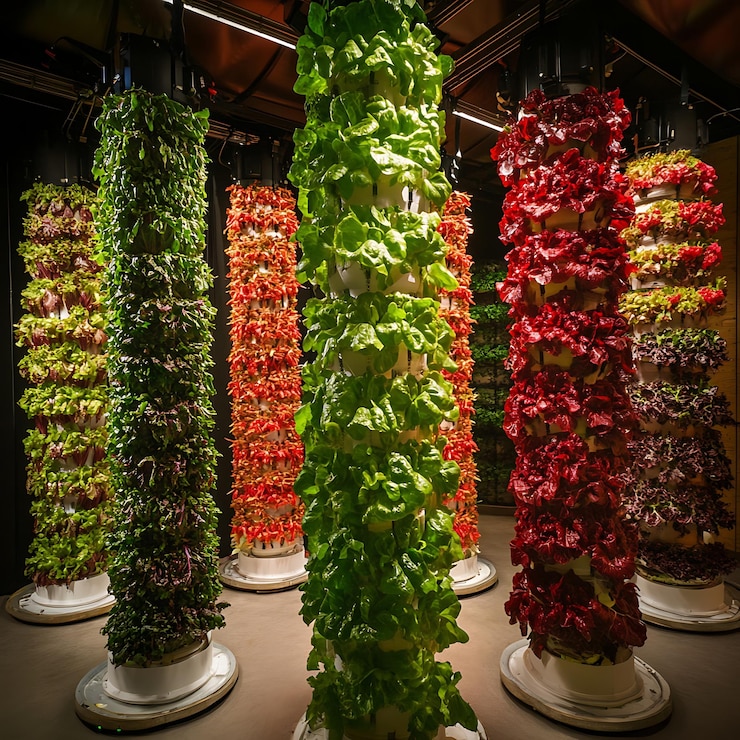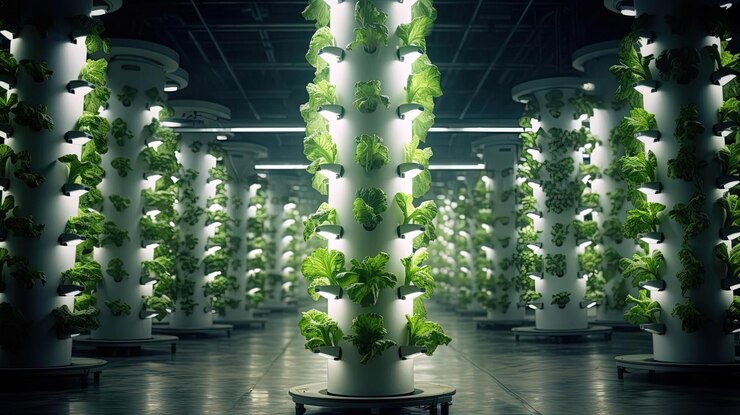Aeroponic tower gardens represent the cutting edge of soilless agriculture, enabling rapid, efficient plant growth in compact vertical systems. By suspending roots in air and delivering nutrient-rich water directly to them, an aeroponic tower garden maximises both nutrient absorption and oxygen uptake, resulting in up to three times faster growth compared to traditional soil-based methods. While hydroponic towers circulate water through submerged roots, aeroponic designs mist or drip-feed roots at precise intervals, ensuring a perfect balance of hydration and aeration. This method not only conserves water—recycling it in a closed-loop system—but also dramatically reduces the footprint required for home or urban farming.
Why Vertical Aeroponic Towers Are Revolutionising Urban Farming
As urban populations swell and arable land diminishes, vertical farming technologies like aeroponic towers offer an attractive solution. These sleek, space-saving columns can be installed indoors, on patios, or in small yards, transforming underutilised spaces into productive micro-farms. Compared to sprawling horizontal plots or bulky hydroponic towers, aeroponic systems stack multiple planting sites vertically, delivering the same or greater yield per square meter.
Enhanced Nutrient and Oxygen Delivery
One of the defining advantages of an aeroponic tower garden is its unparalleled nutrient delivery mechanism. Instead of relying on soil to buffer nutrient availability, the system mists plant roots with a carefully formulated water solution every 10–20 minutes. This intermittent spray ensures roots receive an optimal blend of nutrients and moisture while remaining exposed to ambient air. The result is a high rate of root respiration—roots literally “breathe” more easily—so plants develop strong vascular systems and robust foliage in record time.
Water Efficiency and Sustainability
Water scarcity is a growing global concern, but aeroponic towers address this challenge with exceptional efficiency. In traditional gardening, much of the irrigation water is lost to evaporation, runoff, or soil absorption beyond the root zone. In contrast, an aeroponic tower continuously recycles the nutrient solution: excess liquid drips back into a reservoir, ready for the next cycle. This closed-loop design can reduce water consumption by up to 95%, making aeroponic cultivation far more sustainable than both soil gardening and conventional hydroponic towers.
Comparing Aeroponic Tower Garden Systems and Hydroponic Towers
Both aeroponic and hydroponic towers fall under the broader umbrella of soilless agriculture, yet they differ fundamentally in root-zone management. Hydroponic towers submerge or flow nutrient solution across roots, which ensures constant moisture but can limit oxygen exposure. Aeroponic towers, by contrast, alternate between wet and dry phases, letting roots soak up nutrients during mist cycles and breathe in between. This intermittent exposure fosters healthier root architecture and reduces the risk of root rot. While hydroponic towers are easier to set up for beginners—requiring fewer timing controls—advanced growers often prefer aeroponic towers for their precision and productivity.

Key Components of an Aeroponic Tower Garden
Building a successful aeroponic tower garden involves several critical elements working in harmony:
- Reservoir and Nutrient Solution
The reservoir holds the water-and-nutrient mixture that feeds the plants. Proper sizing ensures the system can sustain continuous misting cycles without frequent refills. A well-maintained reservoir also minimises pH fluctuations, maintaining the optimal range of 5.5–6.5 for nutrient uptake. - High-Efficiency Water Pump
A reliable pump delivers the nutrient solution from the reservoir to the spray nozzles. Submersible pumps are common in consumer towers, offering quiet operation and easy installation. For larger installations, external pumps with higher pressure capacity can support taller towers or denser planting configurations. - Spray Nozzles and Misting Network
Precisely engineered nozzles distribute a fine mist of nutrient solution onto the root mass. The droplet size and spray coverage are crucial: too coarse, and roots can become waterlogged; too fine, and nutrient delivery suffers. Adjustable mist intervals allow growers to tailor the cycle to plant type and ambient conditions. - Lighting and Environmental Controls
For indoor applications, LED grow lights provide the full spectrum needed for photosynthesis. Paired with programmable timers, lights can mimic natural day/night rhythms, promoting vigorous plant development. Sensors for temperature and humidity help maintain the ideal environment—typically 65–78°F and around 60% relative humidity.
Best Crops for Aeroponic Tower Gardens
Aeroponic towers excel with a wide range of plants, especially those with compact root systems and moderate space requirements:
- Leafy Greens: Lettuce, kale, spinach, and arugula thrive, offering multiple harvests in under four weeks.
- Herbs: Basil, parsley, mint, and cilantro flourish in moist environments, enhancing flavour and aroma.
- Fruiting Vegetables: Cherry tomatoes and small peppers can be grown with trellis supports, yielding juicy harvests in less space than traditional plots.
- Microgreens and Edible Flowers: Quick to mature and packed with nutrients, these speciality crops benefit from the precise moisture control of aeroponic setups.
By rotating crop selections and adjusting mist schedules, growers can maintain year-round production, adapting to seasonal shifts and market demands.
Conclusion
Harnessing the power of vertical aeroponic farming, modern gardeners can achieve unprecedented growth rates, water savings, and space efficiency. Whether you’re a hobbyist aiming to supplement your kitchen with fresh greens or an urban farmer seeking scalable solutions, aeroponic tower gardens stand out as a versatile, high-performance option. Compared to hydroponic towers, aeroponic systems deliver superior oxygenation and nutrient precision, driving healthier, faster-growing plants. For those ready to embark on this innovative journey, look no further than ALTO Garden for expert guidance and premium aeroponic tower solutions.



